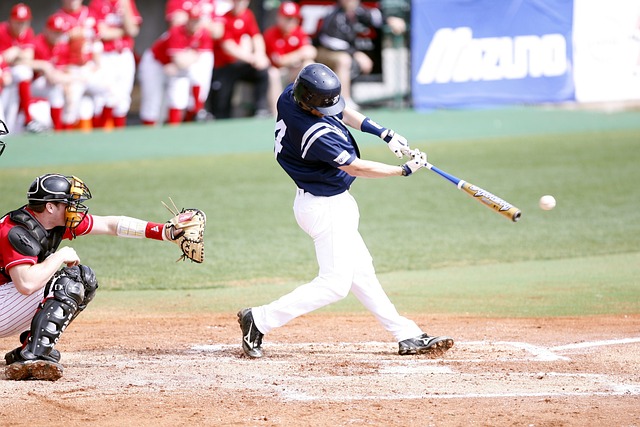Baseball, America’s beloved pastime, is a passion, history, and tradition-filled sport. But beneath the surface of this seemingly straightforward game lies a complex interplay of physics and biomechanics that drive the performance of professional players. In this article, we will explore the science behind baseball and how the laws of physics and the intricacies of human motion come together to create the thrilling spectacle we enjoy on the field.
The Physics of Baseball
The laws of physics play an essential role in virtually every aspect of baseball. From a pitched ball’s flight to a home run’s trajectory, a firm understanding of physics can provide valuable insights into the game.
Pitching: The art of pitching is rooted in the ability to manipulate the physical properties of a baseball in motion. A pitcher can generate various types of pitches, such as fastballs, curveballs, and sliders, by altering the ball’s spin, velocity, and release point. The spin of the ball, in particular, creates a phenomenon known as the Magnus effect, where the air pressure around the spinning ball causes it to curve in flight. This effect allows pitchers to deceive hitters with a variety of pitch movements and speeds.
Hitting: When it comes to hitting, the principles of physics dictate the outcome of a batter’s swing. The collision between the bat and the ball is governed by the conservation of momentum, where the system’s total momentum (bat and ball) remains constant before and after the collision.
A batter’s goal is to maximize the transfer of momentum from the bat to the ball, resulting in a higher exit velocity and a greater likelihood of a successful hit. Factors such as bat speed, swing angle, and point of impact on the bat play a crucial role in determining the trajectory and distance of a batted ball
Fielding: Physics also plays a role in fielding, as players must anticipate the trajectory of a batted ball to make a successful catch or play. Understanding projectile motion, which describes the curved path of an object (in this case, the ball) in free fall under the influence of gravity, is vital for outfielders tracking fly balls. Additionally, infielders must account for the effects of friction and spin when fielding ground balls, as these factors can cause the ball to bounce unpredictably.
Biomechanics of Baseball
While the laws of physics govern the behavior of baseball itself, the biomechanics of the human body determine how effectively players can harness those laws to their advantage. Biomechanics is the study of the human body’s structure, function, and motion, and it plays a crucial role in the performance of professional baseball players.
Pitching: A pitcher’s ability to generate velocity and movement on their pitches is heavily dependent on the efficiency and coordination of their body’s movements. Proper pitching mechanics involve a complex sequence of events, starting with the leg drive and culminating in the release of the ball. Each phase of the pitching motion must be executed with precision and timing to maximize force generation and minimize the risk of injury.
Hitting: Successful hitting requires a delicate balance of strength, coordination, and timing. Biomechanically, the swing is a complex kinetic chain that involves the transfer of energy from the lower body to the upper body and, ultimately, to the bat. The hips and legs generate the initial power, while the torso, shoulders, and arms contribute to the bat’s speed and control. A batter must also possess excellent hand-eye coordination and the ability to make split-second adjustments to their swing to account for variations in pitch type, location, and velocity.
Fielding: In fielding, biomechanics plays a role in players’ agility and speed as they react to batted balls and execute defensive plays. Efficient fielding mechanics help players achieve optimal body positioning, balance, and footwork, allowing them to move quickly and fluidly across the field. Proper throwing mechanics are also essential for infielders and outfielders alike, as they need to generate power and accuracy in their throws while minimizing the risk of injury.
Base Running: The biomechanics of base running are often overlooked but critical to a player’s overall performance. Sprinting speed and acceleration are essential for stealing bases and taking extra bases on hits. Proper running mechanics, including stride length, stride frequency, and body positioning, contribute to a player’s ability to reach top speed quickly and maintain that speed throughout the base paths.
Injury Prevention and Performance Enhancement
The application of biomechanics and physics in baseball extends beyond on-field performance; it is also crucial for injury prevention and performance enhancement. By understanding the forces and stresses placed on the body during various baseball activities, players, coaches, and trainers can develop strategies to minimize the risk of injury and optimize performance.
Strength and conditioning programs tailored to the specific demands of baseball can help players build the necessary strength, flexibility, and endurance to withstand the rigors of a long season. Additionally, sports medicine professionals can use biomechanical analysis to identify and correct flaws in a player’s mechanics that may contribute to injury or suboptimal performance.
The Stake in Performance Metrics
A growing number of athletes, coaches, and fans are interested in understanding how baseball players perform on the field. One of the primary reasons for this interest is the impact that performance metrics have on betting odds and other factors that affect the game’s outcome.
By closely examining the science behind baseball, athletes can identify areas of improvement and work on refining their skills, while bettors can make more informed decisions when placing their wagers.
Betting Odds and Performance Factors
Betting odds are often based on a player’s performance statistics, team rankings, and other factors that can influence the game’s outcome. Understanding the science behind baseball and how it affects performance can provide bettors with a valuable edge when analyzing betting lines and predicting game results.
For instance, knowing how a pitcher’s biomechanics contribute to the velocity and movement of their pitches can help bettors determine which hitters are likely to struggle against a particular pitcher. Similarly, understanding how a hitter’s swing mechanics impact their ability to contact the ball can offer insights into how they might fare against specific pitches or defensive alignments.
In addition to traditional betting approaches, bettors can explore different betting strategies to maximize their chances of success. One such strategy is betting round robins, which involves placing multiple bets on a series of parlay combinations within a single wager. By incorporating the knowledge of baseball physics and biomechanics into their betting strategy, bettors can make more informed decisions when placing their bets, increasing the likelihood of successful outcomes.
Factoring in a Changing Environment
Furthermore, a deeper understanding of baseball physics and biomechanics can help bettors identify potential mismatches or opportunities that might not be immediately apparent from traditional statistics alone. This information can be especially valuable in live betting situations when bettors must quickly assess changing conditions and make informed decisions on the fly.
The science of baseball goes far beyond on-field performance, with the principles of physics and biomechanics playing a crucial role in understanding how athletes perform and excel in the sport. This knowledge benefits players and coaches and enhances the experience for fans, bettors, and spectators alike.
The Drive Behind Performance
The science behind baseball is a fascinating fusion of physics and biomechanics, with both disciplines playing a significant role in the performance of professional players.
By understanding the principles that govern the flight of the baseball, the motion of the human body, and the complex interactions between the two, players can refine their skills, minimize injury risk, and ultimately excel in this captivating and challenging sport.
The knowledge gained from these scientific disciplines not only enhances the game for players and coaches but also deepens the appreciation of the sport for fans and spectators alike.






Recent Comments